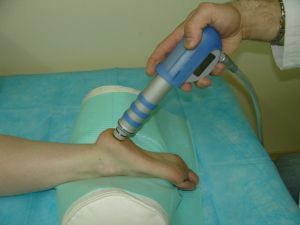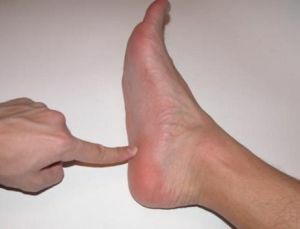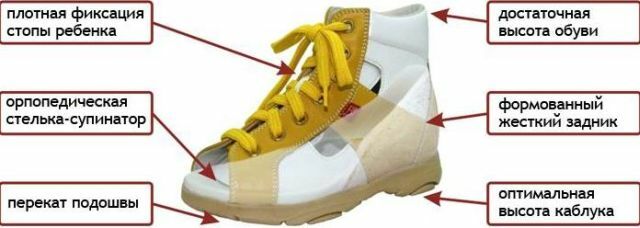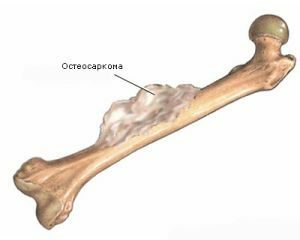 Diseases of the feet in most cases remain unnoticed. Including the pain in the plantar part is often attributed to the sock for a long time uncomfortable shoes.
Diseases of the feet in most cases remain unnoticed. Including the pain in the plantar part is often attributed to the sock for a long time uncomfortable shoes.
People do not even think about inflammatory processes. But in vain. Timely medication can eliminate such serious consequences as calcaneal spur, which gives the patient discomfort, and walking - a wild pain and suffering.
To accurately find out when to contact a doctor, you need to understand the disease "plantar aponeurosis".
Contents of the article
- Concept and features of the inflammatory process
- Who is at risk?
- Symptoms and diagnosis of violation
- Complexities and goals of treatment
- Traditional therapies
- Folk remedies
- What is fraught with the disease
- Warn to later not treat
Concept and features of the inflammatory process
When talking about plantar aponeurosis, experts are referring to a person's condition in whichthe inflammatory process of the plantar aponeurosis begins. The disease itself is called plantar fasciitis.
Plantar aponeurosis is the plantar fascia that connects the calcaneal tubercle and the head of metatarsal bones, resulting in the support of the longitudinal arch of the foot.
When talking about the plantar aponeurosis as a disease, it means that the person has started the inflammatory process of the presented original connection with the development of his dystrophic changes.
About the beginning of pathology, a person learns after the manifestation of pain in the heel.
As the heel has all the load during walking, it marks the development of the heel spur - bone growth on the calcaneal hillock provoked by inflammation of the aponeurosis. 
As a result, a person suffers from burning and sharp pain in the morning. During the day, you can see some improvement, but only in case of rest.
Walking and prolonged stay on the legs aggravates the process and leads to serious consequences - a person begins to limp, his movements lose their former activity, the treatment of such complications occurs only through surgical intervention.
Who is at risk?
Inflammation of plantar aponeurosis begins as a result of sprain of the foot.
This can result from:
- of a person's wrong walking - when the foot is inward;
- with prolonged wearing of high heels;
- walking for long distances in particular, if there is an uneven terrain - hike and other walks;
- running - plantar aponeurosis is a disease of athletes-runners;
- in the presence of excess weight, as a result of which the aponeurosis experiences severe overload;
- long sock of one pair of shoes - for 4-5 years;
- socks uncomfortable shoes;
- presence of hypertension gastrocnemius muscles.
Middle-aged people are at risk.
In men presented pathologies are rarely diagnosed. The cause of the inflammatory process in the stronger sex is exercise and prolonged stay on the legs due to professional activity.
Symptoms and diagnosis of disorder
Symptoms of plantar aponeurosis include pain in the calcaneal region or along the entire sole of the foot.
Often, a doctor can determine the development of the described disease only on the patient's complaints. This pain can not be confused with the rest - the  patient is difficult to walk, but after a short rest during the day, unpleasant manifestations retreat slightly.
patient is difficult to walk, but after a short rest during the day, unpleasant manifestations retreat slightly.
To accurately determine the nature of the unpleasant manifestations, the doctor sends the patient for a complete examination. Here, an X-ray is done to a person, as a result of which the image can clearly distinguish inflammation in the form of an increased aponeurosis.
In advanced cases, the development of the heel spur is diagnosed - the formation of a bone growth. By radiography, a doctor can prescribe an effective treatment.
Complexities and goals of treatment
Treatment of plantar aponeurosis may take several months. It all depends on the degree of development of the disease.
If a person consults a doctor on time, the inflammatory process can be stopped and eliminated by physiotherapy, massage and other actions that do not stop and are performed on their own for prevention.
However, in case of neglect of the disease the patient should be ready for long-term treatment and recovery, as well as for the course of intramuscular injections.
Traditional methods of treatment
Traditional methods of treatment include taking medications and applying actions that reduce the burden on the leg, which is the basis of prevention.
All treatment is reduced to the following:
- Admission of non-steroidal anti-inflammatory drugs - Ibuprofen or Naproxen.
- Taking corticosteroids - Prednisolone and other drugs.
- Physiotherapy - warming procedures, ultrasound and laser therapy. In the presence of calcaneal spurs apply shock-
 wave therapy.
wave therapy. - If the cause of the development of plantar aponeurosis is excess weight or degenerative joint changes, their complex elimination of is carried out.
- The patient is prescribed massage a, conducted by an experienced specialist and aimed at improving blood circulation, which helps to restore the destroyed cells and reduce inflammation.
- A patient during treatment and after( if he has flat feet or excessive pronation of the foot) should wear only orthopedic shoes .This can be the use of orthopedic insoles or a sock of special shoes.
A person must closely monitor their health. If he has painful sensations, they should be immediately eliminated by ordinary rest, and by changing uncomfortable shoes.
If conservative methods of treatment do not lead to positive results, a decision is made to conduct a surgical intervention. This occurs rarely and is associated only with the presence of calcaneal spurs.
Folk remedies
It is possible to eliminate inflammation of the plantar aponeurosis and alleviate the sufferings of the patient with folk medicine.
In general, many experts recommend the use of various formulations for compresses. They relieve pain and reduce inflammation. Some of them are able to "break" the heel spurs.
For example, to eliminate the heel spur, you can use an effective mixture of garlic.
Garlic is peeled and squeezed through the press. Kashitsu is applied to the heel, and on top of it a thin piece of fat. The leg is wrapped in polyethylene and put on woolen socks. Doing such compresses is better at night until complete elimination of bone growth.
To eliminate the inflammatory process, use flax seeds and potato peelings.
Both components take a handful and mix thoroughly. Composition poured a glass of water and cook until thick. Once the compound has cooled slightly, apply it on the sole of the foot and wrap it with polyethylene. With a gruel on your legs, you can spend no more than half an hour. After the time has elapsed, rinse out the make-up and massage.
What is fraught with the disease
As already mentioned above, the complications of plantar aponeurosis include the formation of the heel spur.
 This is only part of the diseases that can result from untimely medication. One of the most common complications is chronic pain syndrome .
This is only part of the diseases that can result from untimely medication. One of the most common complications is chronic pain syndrome .
This unpleasant defect practically does not give in to treatment, but only causes discomfort. Among other things, the development of diseases of the knee and hip joints, up to pathologies with the spine, is not uncommon.
Caution, then do not treat
. As a prophylaxis, use the methods listed above for the treatment of the presented disorder, except for medication and physical therapy.
If you have pain, consult your doctor for testing and diagnosis.
Problems with your legs, no matter what they are, can not be ignored. This is fraught with the development of serious pathologies, which leads to partial immobility. Watch your health and ask for help from specialists.



